Everyone knows that in order to function properly, the body needs a regular intake of a number of nutrients that are needed for a healthy metabolism and, accordingly, the balance of energy production and expenditure processes. The process of energy production, as you know, takes place in the mitochondria, which, thanks to this feature, are called the energy centers of cells. And the sequence of chemical reactions that allows you to get energy for the work of each cell of the body is called the Krebs cycle.
Krebs Cycle – miracles that happen in the mitochondria
The energy received through the Krebs cycle (also TCA – cycle of tricarboxylic acids) goes to the needs of individual cells, which in turn make up various tissues and, accordingly, organs and systems of our body. Since the body simply cannot exist without energy, mitochondria are constantly working to continuously supply the cells with the energy they need.
Adenosine triphosphate (ATP) – it is this compound that is a universal source of energy necessary for the flow of all biochemical processes in our body.
TsTK – this is the central metabolic pathway that completes the oxidation of metabolites:
- fatty acids;
- amino acids;
- monosaccharides.
During aerobic decay, these biomolecules are broken down into smaller molecules that are used for energy or the synthesis of new molecules.
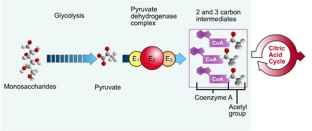
The tricarboxylic acid cycle consists of 8 stages, i.e. reactions:
1. Citric acid formation:
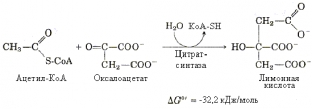
2. Formation of isocitric acid:

3. Dehydrogenation and direct decarboxylation of isocitric acid.
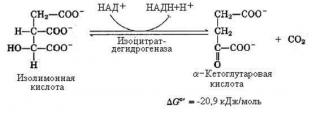
4. Oxidative decarboxylation of α-ketoglutaric acid
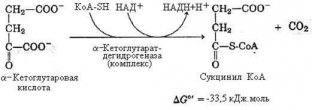
5. Substrate phosphorylation
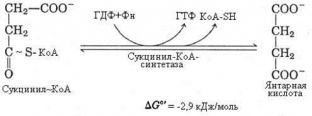
6. Dehydrogenation of succinic acid with succinate dehydrogenase
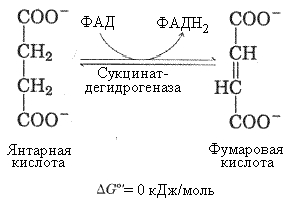
7. Formation of malic acid by the enzyme fumarase
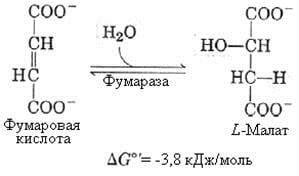
8. Formation of oxalacetate
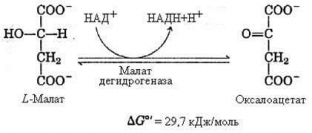
Thus, after the completion of the reactions that make up the Krebs cycle:
- one molecule of acetyl-CoA (formed from the breakdown of glucose) is oxidized to two molecules of carbon dioxide;
- three NAD molecules are reduced to NADH;
- one FAD molecule is reduced to FADH2;
- one molecule of GTP (equivalent to ATP) is formed.
NADH and FADH2 molecules act as electron carriers and are used to form ATP in the next step of glucose metabolism – oxidative phosphorylation.
Krebs cycle functions:
- catabolic (oxidation of acetyl residues of fuel molecules to end products of metabolism);
- anabolic (substrates of the Krebs cycle – basis for the synthesis of molecules, including amino acids and glucose);
- integrative (CTK – link between anabolic and catabolic reactions);
- hydrogen donor (delivery of 3 NADH.H+ and 1 FADH2 to the mitochondrial respiratory chain);
- energy.
The lack of elements necessary for the normal course of the Krebs cycle can lead to serious problems in the body associated with a lack of energy.
Thanks to metabolic flexibility, the body is able to use not only glucose as an energy source, but also fats, the breakdown of which also gives molecules that form pyruvic acid (involved in the Krebs cycle). Thus, properly flowing CTC provides energy and building blocks for the formation of new molecules.






Add a comment